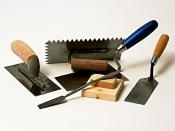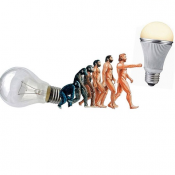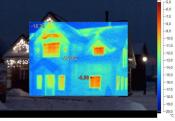Search
Login
Recommended
We choose roofing material, where and for what purposes roofing material is used, technical characteristics of roofing material
Ordinary roofing cardboard, impregnated with soft oil bitumen and coated with refractory bitumen on top, is called roofing material. The scope of its application is extremely wide and roofing material is used both for roofing and for waterproofing.
Content
- Technical characteristics of roofing material
- Video ruberoid production process video
- How to cover the roof with roofing material
- Options for laying roofing material on the roof
- Laying roofing material on a wooden crate video
- Waterproofing with roofing material
- Foundation waterproofing roll video
- Distinctive features of TechnoNIKOL roofing material
Technical characteristics of roofing material
Quality assessment of roofing material is made on the basis of a whole range of different indicators. Tensile strength as well as frost and heat resistance are taken into account. An important indicator is water absorption and water resistance, which are especially important when arranging waterproofing.
In the production of roofing material, lightweight roofing cardboard is used, for the impregnation of which ordinary road bitumen is used. The roofing material plate consists of several layers of cardboard, superimposed on each other and firmly fastened with bitumen mortar. The finished material is coated on both sides with a layer of refractory bitumen and an additional coating is applied to the outside. Roofing material with topping better resists ultraviolet radiation. Mica, slate fines or sand are used for sprinkling, and they differ in grain size and the letter always indicates their size on the markings. A layer of talc or limestone is applied to the inside of the roofing material to prevent the layers from sticking together.

The document regulating the release of GOST roofing material was adopted in 1993 and since then the release of this rolled roofing and waterproofing material has to be carried out in compliance with all technologies. The latest edition of GOST 10923-93, developed by the Polymerstroymaterialy Association, which takes into account all the nuances of the production of roofing material, is considered valid.
How to cover the roof with roofing material
Roofing material may well serve as a material for covering the roof. Despite the fact that there are many modern roofing materials, roofing material is very popular among people who temporarily do not have sufficient funds to buy expensive roofing.
In order to cover the roof with roofing material, you can completely do without two people and do all the work in just one day.
The first thing to do is to carefully prepare the crate. Due to the fact that the roofing material is flexible and elastic, it is necessary to pump the crate as often as possible. The distance between the boards should be about 10-15cm. If possible, you can make a continuous coating of plywood on which the roofing material will not sag and bend from the slightest load from snow or rain.

As a rule, roofing material is laid in several layers, the amount of which directly depends on the angle of inclination of the roof. On flat roofs it is necessary to lay about five layers of roofing material, and on the roofs with a steep slope of 30-45 degrees, two is quite enough.
Options for laying roofing material on the roof
There are three options for laying roofing material plates on the roof.
The first method is used most often, since it does not require special knowledge and skills. With this method, the sheets of roofing material are rolled from top to bottom, making a small overlap (20-30cm) through the ridge. If the dimensions of the roofing material allow, then the length of the roll should just be enough for both roof slopes without cutting the sheets. Considering that the standard length of a roll with coarse-grained topping is 10 m, and with a dusty one is 15 m, then choosing the right size and length will not be difficult.

The second option is a little more complicated and involves laying sheets across the roof slopes.
They begin to lay roofing material from below, leaving a small margin on the hem. After the first sheet is laid across, the next layer is laid on top of it with an upward offset. Thus, it is necessary to move up to the ridge itself, which must be covered with one layer of roofing material, bending it in both directions.

The third option is a combination of the first and second method of shelter. First, longitudinal strips are laid, and then transverse ones lie on them. The edges of the sheets are fixed using wooden planks or metal strips, firmly pinned to the crate.
The shelf life of a roof covered with roofing material is at least 5 years. During this time, you can raise enough money to buy a durable and modern roofing material.
Waterproofing with roofing material
Roofing material as a waterproofing material, quite often used in the construction of foundations. With it, you can protect the base from the damaging effects of dampness and moisture.
The set of measures for waterproofing the foundation directly depends on the level of groundwater under the base of the house. Most often they use roofing material, the price of which is quite low, to protect the strip foundation, which is first covered with bitumen mastic on top, and then sheets of material are rolled over it. This procedure must be done at least two times to get a double reliable layer of waterproofing. The hanging edges of the roofing material are not cut, but lead down along the edges and pressed with vertical waterproofing.

Vertical waterproofing with roofing material is done by a fusing method. To do this, the base is coated with bituminous mastic, after which a ruberoid with an overlap of 10-15 cm, preheated with a gas burner, is applied. The sheets are pressed tightly, and the procedure is repeated again to get a double layer.

It should be noted that the life of the roofing material in the absence of direct sunlight increases significantly, therefore, when waterproofing the foundation with this material, you do not have to worry that the procedure will have to be repeated after 2-3 years.
Distinctive features of TechnoNIKOL roofing material
Among ordinary roofing material, which has standard strength characteristics, materials that are manufactured in accordance with European standards and have a much more serious service life and better ductility and strength stand apart. There are four varieties of this material:
Rubemast, a fused analog of a conventional roofing material, which is covered with a layer of extremely viscous bitumen, which greatly simplifies the process of laying it.
Glass-roofing material, which is often called glass melt, differs from the standard version in that instead of roofing cardboard, they use a special fiberglass, due to which its service life increases several times.

Euroruberoid is an analogue of glass melt, only impregnated with bitumen with the addition of polymers.

Only, this is also a type of roofing material, the difference is that shale substrate is used as an impregnation.
The use of TechnoNIKOL roofing material is much more economical, since the service life of the products is from 10 to 20 years.





